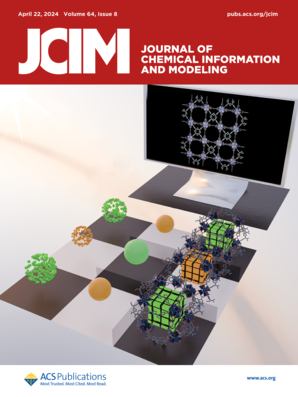MHNfs: Prompting In-Context Bioactivity Predictions for Low-Data Drug Discovery.
IF 5.6
2区 化学
Q1 CHEMISTRY, MEDICINAL
引用次数: 0
Abstract
Today's drug discovery increasingly relies on computational and machine learning approaches to identify novel candidates, yet data scarcity remains a significant challenge. To address this limitation, we present MHNfs, an application specifically designed to predict molecular activity in low-data scenarios. At its core, MHNfs leverages a state-of-the-art few-shot activity prediction model, named MHNfs, which has demonstrated strong performance across a large set of prediction tasks in the benchmark data set FS-Mol. The application features an intuitive interface that enables users to prompt the model for precise activity predictions based on a small number of known active and inactive molecules, akin to interactive interfaces for large language models. To evaluate its efficacy, we simulate real-world scenarios by recasting PubChem bioassays as few-shot prediction tasks. MHNfs offers a streamlined and accessible solution for deploying advanced few-shot learning models, providing a valuable tool for accelerating drug discovery.MHNfs:提示低数据药物发现的上下文生物活性预测。
今天的药物发现越来越依赖于计算和机器学习方法来识别新的候选药物,但数据稀缺仍然是一个重大挑战。为了解决这一限制,我们提出了MHNfs,这是一个专门设计用于预测低数据场景下分子活性的应用程序。MHNfs的核心是利用最先进的少量活动预测模型MHNfs,该模型在基准数据集FS-Mol中的大量预测任务中显示出强大的性能。该应用程序具有直观的界面,使用户能够根据少量已知的活性和非活性分子提示模型进行精确的活动预测,类似于大型语言模型的交互界面。为了评估其有效性,我们通过将《PubChem》的生物分析重新塑造为少量预测任务来模拟现实世界的场景。MHNfs为部署先进的少量学习模型提供了一个简化且易于访问的解决方案,为加速药物发现提供了一个有价值的工具。
本文章由计算机程序翻译,如有差异,请以英文原文为准。
求助全文
约1分钟内获得全文
求助全文
来源期刊
CiteScore
9.80
自引率
10.70%
发文量
529
审稿时长
1.4 months
期刊介绍:
The Journal of Chemical Information and Modeling publishes papers reporting new methodology and/or important applications in the fields of chemical informatics and molecular modeling. Specific topics include the representation and computer-based searching of chemical databases, molecular modeling, computer-aided molecular design of new materials, catalysts, or ligands, development of new computational methods or efficient algorithms for chemical software, and biopharmaceutical chemistry including analyses of biological activity and other issues related to drug discovery.
Astute chemists, computer scientists, and information specialists look to this monthly’s insightful research studies, programming innovations, and software reviews to keep current with advances in this integral, multidisciplinary field.
As a subscriber you’ll stay abreast of database search systems, use of graph theory in chemical problems, substructure search systems, pattern recognition and clustering, analysis of chemical and physical data, molecular modeling, graphics and natural language interfaces, bibliometric and citation analysis, and synthesis design and reactions databases.

 求助内容:
求助内容: 应助结果提醒方式:
应助结果提醒方式:


